From the forest to the classroom: Energy literacy as a co-product of biofuels research
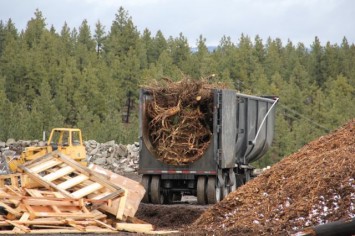 Hougham et al JSE Vol 8 Jan 2015 (1)
Hougham et al JSE Vol 8 Jan 2015 (1)
Abstract
The Northwest Advanced Renewables Alliance (NARA) is a biofuel research project that includes a holistic educational approach to energy literacy. NARA research is focused on woody biomass as a feedstock for biofuels and associated co-products, particularly in the forested areas of the U.S. Pacific Northwest. Extending beyond the science of biofuels, the NARA project examines many social elements of our energy economy, including education. Projects that can combine research and connections to educational venues provide excellent opportunities to expand the impact of grant funded proposals. Keys to making this possible include coordination across disciplines, interpretation of research results, and research processes in the field coupled with investment into integrated educational strategies within the project. This paper outlines elements of the NARA approach to energy literacy, offering strategies for approaches to broader impacts in projects beyond the energy sector.
Keywords: Sustainability Education, Energy Literacy, Biofuels, Research
This paper presents a case that demonstrates the broader impact of research programs within a sector of energy- biofuels- and how research in that area impacts education for energy literacy. This case also presents an example of how a research community embraced efforts to repackage scientific data for use in education communities across sectors in the education field (k-12, undergrad, digital media, and teacher professional development). The Northwest Advanced Renewables Alliance (NARA) project was founded through a USDA grant (no. 2011-6800530416) The resulting conceptual framework from this energy project reflects the collaboration of over 100 researchers and staff and also speaks to the impact of one funding agency understanding the impact of socially engaged research to connect to stakeholders as well as STEM education writ large. Developing environmentally and economically sustainable alternatives to petroleum is a central challenge of the 21st century. Aviation requires energy-dense liquid fuels, currently derived exclusively from petroleum. This fossil energy dependence poses tremendous challenges to carbon emissions reductions. In the Pacific Northwest, considerable research is focused on developing viable biofuel alternatives from existing waste streams like forest harvest residues and municipal solid waste.
First, we will discuss the proposition that significant positive environmental and economic benefits can be achieved through the development of biofuels, including lower carbon emissions, improved air/water quality, and the development of a regional sustainable energy and co-product industries. Then, we consider how the wood-based biofuels research populates an energy literacy infrastructure that reaches educational stakeholders across disciplines and audiences.
Importance of Wood-Based BioFuels Research
Advanced biomaterials technologies – biofuels and co-products derived from forest, crop, and urban residues, as well as non-food crops – hold great promise for transforming the energy sector and can provide opportunities for revitalization of rural economies, biodiversity protection, and climate stabilization. Congress has mandated that the U.S. annually produce biofuels from biomass to replace 30% of petroleum-derived gasoline by 2030 (Perlack et al. 2005). In addition, these same technologies will provide sustainable routes to supply other key chemical needs currently derived from petroleum, such as monomers for industrial polymer production (e.g., polystyrenes, polyacrylates, polypropylenes, phenols, etc.) and specialty chemicals (solvents, paints, fine chemicals, disinfectants, and other commodities).
As the world increasingly looks to biofuels to support the growing global demand for energy, there is a need to recruit and train a next-generation workforce that can transform existing energy supply chains to bring bioenergy research and innovations to market. This poses a dual challenge, as the workforce must not only create new economically viable products, but also ensure the maintenance of ecological services required to sustain both human life and biodiversity.
Scientists from public universities, government laboratories and private industry from throughout the Northwest, and beyond, have joined together to focus on developing ways to turn one of the region’s most plentiful commodities—wood and wood waste—into jet fuel. Led by Washington State University, NARA (http://nararenewables.org/) takes a holistic approach to building a supply chain for aviation biofuel with the goal of increasing efficiency in everything from forestry operations to conversion processes. Using a variety of feedstocks, including forest and mill residues as well as construction waste, the project aims to create a sustainable industry to produce aviation biofuels and important co-products. The project includes a broad alliance of private industry and educational institutions from throughout the Northwest. Aviation requires energy-dense liquid fuels, currently derived exclusively from petroleum. This fossil energy dependence poses tremendous challenges to carbon emissions reductions. Networks have been established to develop a new bio-based energy industry situated upon the close geographic proximity of physical assets across the entire supply chain. Networks of academic institutions committed to bioenergy education are growing stronger and more coordinated in their efforts to reach faculty and students.
Academic institutions are at the forefront of the challenge to educate a future workforce, policymakers, and citizenry that can perform within the complex supply chain that must be built to transform the energy sector. However, working effectively to bring about this transformation will require more than just a conceptual grounding in bioenergy science. Transformation will only come by truly rethinking academic education to contextualize bioenergy innovations within the larger framework of energy development and to provide skills needed to work within this inherently interdisciplinary system. The educational challenge is therefore threefold, as it must include:
1) conceptual knowledge across multiple disciplines;
2) an understanding of bioenergy research and innovations within the larger context of energy supply chains; and
3) the development of “soft-skills” such as problem solving and communication to deal with diverse real-world situations.
While academic education has traditionally been successful in providing disciplinary focus, it has struggled to provide the kinds of opportunities that a transformative bioenergy education requires. Academic institutions are characteristically discipline-oriented and are marked by few opportunities for real-world learning (Szostak 2007). While a deep understanding of various disciplines related to bioenergy production and distribution is critical, it must be developed within a larger interdisciplinary framework that teaches how the individual parts fit within larger supply chain systems. Students must understand the challenges and opportunities for bioenergy within this larger context and learn the skills needed to work within an interdisciplinary environment.
From Research to the Classroom and the Community—the Educational Challenge
To meet its goals, NARA is organized into five specific areas of focus.
- Education: This team engages citizens, meets future workforce needs, enhances science literacy in biofuels, and help people understand how they’re going to fit into the new energy economy.
- Conversion: This team provides a biomass-derived replacement for aviation fuel and other petroleum-derived chemicals in a way that is economically and technologically feasible.
- Feedstocks: This team takes a multi-pronged approach to the development and sustainable production of feedstocks made from wood materials, including forest and mill residues and municipal solid waste.
- Sustainability Measurement: This team evaluates and assesses the environmental, social, and economic viability of the overall wood to biofuels supply chain, guiding the project as it goes forward.
- Outreach: This team serves as a conduit between researchers and community stakeholders, helping to transfer the science and technology of biofuels and important co-products to communities in the Northwest.
The Education team uses the outputs from the other four teams and this research to serve as the ‘feedstock’ for the educational approach seen in the NARA model. These outcomes or products include datasets, media, reports, published articles and presentations. The members of the education team depend on these artifacts to connect students from a variety of ages and programs to energy issues facing our communities today.
Education
We know that energy and biofuels literacy can be challenging to teach in the classroom. Energy concepts and applications are complex and holistic, and draw from the major sciences: biology, ecology, chemistry, physics, math, earth, and environmental. We also know that while researchers and educators have developed literally thousands of resources for teachers, it can be difficult to understand how resources can be used to teach different components of science, and how those resources link back to the state and national science standards that all schools follow. The NARA Education team meets this challenge through:
1) integrating educational opportunities within project research efforts; and
2) converting research data into educational formats that are available to graduate students, undergraduate classes, k-12 teacher professional development, web-based resources and print materials for lessons.
Middle and High school Curriculum
The McCall Outdoor Science School (MOSS) delivers biofuel education programs to 2,500 middle and high school students annually both during the school year and during the summer. MOSS strives to increase energy literacy in a place based, hands-on approach through the residential program offered by the University of Idaho. New biofuel lesson plans are created and field-tested in partnership with Facing the Future. Energy literacy lessons are taught daily at MOSS. Students attending the MOSS program participate in two energy lessons, one occurs during the day in the field and the other is apart of the first night evening program that introduce the inquiry process to students (Schon, et al 2014). Teachers also have the option to choose Engaging Energy as a topic for their students for one full field day. There are currently five topics available. All students attending MOSS also partake in two different energy chores to cover basic energy literacy principles such as renewable and nonrenewable energy, sources of energy, value and importance of energy in our daily lives, and basic units of energy.
MOSS also assess a sample of students that attend the programming to ascertain student change in energy literacy from their time at MOSS. MOSS staff, along with the NARA education team, has worked to create and pilot test an energy literacy assessment tool that will be used to define change in energy literacy for students attending NARA related programs.
Teacher Professional Development
NARA teacher professional development is approached through two different formats: 1) a webinar series designed to support teachers with new content knowledge in bioenergy and skills for facilitating problem-based learning in conjunction with coaching an Imagine Tomorrow team (see below for a description of Imagine Tomorrow) and 2) a 4-day intensive workshop where teachers are engaged in problem-based learning around the topic of bioenergy. The goals of our teacher professional development are:
1) to increase the energy literacy of students and teachers in the Pacific Northwest by providing direct education and resources for teaching and learning about energy in place-based contexts
2) to connect teachers and students to ongoing scientific research in the broad area of bioenergy and the specific area of woody biomass based biofuel
3) to create an ongoing dialog between the education /outreach teams and the science team for mutual benefits
4) to use the Northwest Advanced Renewables Alliance (NARA) project as a case study of one way that researchers are looking at addressing the complex questions associated with providing energy in a sustainable way.
Facing the Future- Curriculum Modules
Facing the Future, an independent program of Western Washington University, creates interdisciplinary curricula that equip and motivate students to develop critical thinking skills, build global awareness, and engage in positive solutions for a sustainable future. This curricula uses global sustainability as a framework to present engaging, real-world issues to K-12 students and reaches 1.5 million students each year. Facing the Future resources are used in all 50 states and over 140 countries.
In partnership with the NARA project, Facing the Future recently developed Fueling Our Future: Exploring Sustainable Energy Use (FOF) for a middle school and high school audience (Hendrickson, et al 2014). Both units contain 9 interdisciplinary lessons that immerse students in personal, local, and global energy issues. Because the NARA project is a rich example of a contemporary, real-world energy problem, this project served as a model for many of the lessons in these units. For example, in Fueling Our Future’s culminating assessment, students are asked to evaluate the environmental, economic, and social sustainability of using different feedstock to produce aviation biofuel in the Pacific Northwest. Just like NARA researchers, students are required to use information from several different disciplines, employ critical thinking skills, and collaborate with others to work toward positive solutions for a sustainable future.
Imagine Tomorrow- Design Competition
Imagine Tomorrow is a high school energy competition that started in 2008 at Washington State University and challenges students to explore energy issues such as alternative energy. 2014 was the seventh year of the competition. The numbers of participating students has steadily increased, starting at 296 in 2008 and reaching 542 in 2014. Statistics have shown nearly equal gender participation over the years, which many accredited to the framework of the competition that included challenges encompassing not just technical fields, but also overlapping social sciences. The four challenges currently are Technology, Behavior, Design and Biofuels. Past observational trends implied that many of the students were interested in STEM and gaining knowledge in energy issues. Therefore a goal was set to determine which variables in the competition, such as repeat participation, challenges, etc., might contribute to varying displays of energy literacy in the two main competition deliverables. These were the abstracts which were submitted prior to the competition, and the posters which were presented at the event.
Connection between NARA and Tribal Communities
There is approximately 1.8 million acres of commercial forestlands distributed throughout the NARA region on tribal lands. The top five timber-owning tribes ranked by the their commercial acres include:
| Tribe | Commercial Acres | |
| 1 | Confederated Tribes of the Colville Reservation | 660,000 |
| 2 | Yakama Nation | 449,000 |
| 3 | Confederated Salish & Kootenai Tribes | 300,000 |
| 4 | Confederated Tribes of Warm Springs | 256,000 |
| 5 | Quinault Indian Nation | 174,000 |
Various tribes have explored the potential of establishing or supporting existing local biomass operations to dovetail with their forest and/or fire management planning activities. The NARA Tribal Partnership Projects (TPP) recently completed a biomass availability and cost assessment for the Confederated Salish and Kootenai Tribes (CSKT) of Montana. The tribe uses a management plan that considers both the natural fire regime and the historic forest seral classes to derive the management actions suitable for a specific tract. Using these tribally prescribed treatments and their 10-year harvest plan (Table 1), our analysis identified the availability of slash and the cost to chip and deliver it to Pablo, MT (a potential depot site in the Western Montana Corridor). A key finding of our work is that the tribal forest management plan is focused strongly on ecological management, but it yields comparable slash production as typical western Montana industrial forestry operations. This project highlights our goals of providing meaningful information to our tribal partners while supporting a regional supply chain analysis that has an end goal of providing biomass to gain an aviation biofuel product. The tribe is now able to identify their potential role as a biomass supplier in the Western Montana Corridor.
| Year | Harvested Area (Acres) | Harvest (MMBF) | Recovered Slash (yd3) | Recovered Slash (BDT) | Avg. Delivered Cost ($/BDT) |
| 2013 | 11,049 | 18.1 | 31,966 | 12,946 | 16 |
| 2014 | 7,554 | 18.1 | 32,243 | 13,059 | 24 |
| 2015 | 10,431 | 18.1 | 31,992 | 12,957 | 21 |
| 2016 | 9,459 | 18.1 | 32,170 | 13,029 | 20 |
| 2017 | 8,822 | 18.1 | 32,283 | 13,075 | 17 |
| 2018 | 7,836 | 18.1 | 32,343 | 13,099 | 19 |
| 2019 | 9,482 | 18.1 | 32,266 | 13,068 | 20 |
| 2020 | 7,826 | 16.8 | 30,228 | 12,242 | 22 |
| 2021 | 9,541 | 18.1 | 32,364 | 13,108 | 20 |
| 2022 | 9,318 | 18.1 | 36,119 | 14,628 | 24 |
The NARA education focus guides our efforts in seeking out and securing undergraduate and graduate level training opportunities for Native scholars, while we partner with tribal communities. To date, we have provided undergraduate and graduate training to 12 scholars, with 7 of them having tribal affiliations from 4 different academic institutions.
Collegiate Courses – IDX
The Integrated Design Experience (IDX) is a joint studio for undergraduate and graduate students from Washington State University and the University of Idaho who are interested in identifying innovative solutions to complex, contemporary, real-world challenges. Specifically, students and faculty together with NARA stakeholders analyze the feasibility of wood-based biofuel supply chains throughout the Pacific Northwest. Faculty with expertise in engineering, design, planning, and economics facilitate IDX, which attracts students seeking degrees in engineering (civil, mechanical, environmental), architecture, landscape architecture, planning, law, business, environmental science, renewable materials and other disciplines.
IDX goals include:
- Giving students skills in collaborative research, problem-solving, and design methods to utilize in their academic and professional work;
- Training a workforce ready to participate in the renewable energy and biofuels industry; and
- Providing technical assistance to communities interested in participating in the emerging biofuels economy.
IDX works with regional partners on identifying community assets, conducting site selection, and resource flow and supply chain economic analyses, as well as site specific designs for biofuels facilities. Every year, IDX produces key outputs including a regional Analysis report that focuses on providing analyses of the supply chain and a Design portfolio that showcases innovative concepts and designs for selected production sites and linkages within the supply chain.
Undergraduate Research- SURE
The Summer Undergraduate Research Experience (SURE) program focuses on integrating educational opportunities within the research framework. Undergraduate students are recruited to spend 10 weeks during the summer working under the mentorship of NARA faculty and graduate students to conduct independent research full time. Students are engaged in the research process at every step including conducting a literature review of previous research efforts, designing laboratory experiments, analyzing data, summarizing results, and finally disseminating their research results in the form of a poster presented during a research symposium. The NARA SURE program has trained 22 students over the past 3 years. Students have the opportunity to work with faculty at any participating University and also with researchers from Industry (i.e. Weyerhaeuser). This experience serves to train and educate a next-generation workforce for entering the bioenergy industry
Institute for Energy Studies
The Institute for Energy Studies at Western Washington University was established to deliver new undergraduate interdisciplinary energy degrees and two energy minors. The interdisciplinary, authentic, and service learning driven model for these degrees builds on WWU’s successful legacy of interdisciplinary approaches to undergraduate education. These programs help fulfill WWU’s commitment to filling a critical unmet need in the Northwest region for Bachelor-level graduates who are prepared to become future professionals within the renewable energy sector. These graduates understand the critical linkages between science, technology, economics, business, and policy, and how they combine to advance the new energy industry.
Digital Curriculum Assets
The efforts from the NARA teams and educators are integrated into the Energy Literacy Principles Matrix (http://energyliteracyprinciples.org/), a web-based resource that helps solve this challenge by effectively organizing materials to be used by science teachers and the general public. The organization of these materials follows the U.S. Department of Energy authored energy literacy principles as a guideline (U.S. Department of Energy, 2012). This web-based resource serves three primary functions:
1) It lays out the fundamental concepts (or building blocks) of energy literacy in an organized, logical way.
2) It organizes, classifies, describes, and cross-references resources to both fundamental concepts AND to science standards.
3) It provides an easy to use resource for teachers and community members to find information useful to their classroom or city.
Assessment
Essential to all education efforts is quality assessment that informs educators of instructional impacts and shapes decisions about future instruction. To assess the impact of the array of educational activities within NARA, the education team is creating a set of instruments to measure the energy literacy of individuals from the upper elementary grades through adulthood. The Learning and Performance Research Center (LPRC) at Washington State University has provided consultation in instrument development efforts. The energy literacy instruments reflect both the Energy Literacy Principles Matrix, referenced above, and the unique focus on sustainable biofuels that embodies the NARA model. Once complete, the energy literacy instruments will provide valuable information about the success of NARA activities in reaching its goals. Indeed, in line with the alliance’s mission to leverage research to achieve broad impact, the energy literacy instruments developed within NARA efforts will help to move forward educators’ understanding of how to build a population that is equipped to handle the multifaceted challenges of 21st century energy demands.
Implications
Developing sustainable alternatives to conventional energy sources is key 21st century challenge, one that will require a future workforce prepared to succeed in the bioenergy sector. Moving education forward at the speed of research will require a transformational shift in academic approaches, away from entrenched disciplinary specialization and towards pedagogies rooted in authentic, experiential learning and real-world issues (Hougham, et al 2012). The overarching goal of the education component of this project is to recruit, motivate, and train students to become next-generation bioenergy professionals by transforming bioenergy-based education. We achieve this goal by introducing bioenergy literacy in many venues where students and stakeholders can engage with research in progress. The potential outlined here for integrated and holistic educational approaches for multidisciplinary grant-funded work stretches beyond energy literacy, offering a framework that could be used in a variety of large-scale research programs.
Acknowledgments
This work, as part of the Northwest Advanced Renewables Alliance (NARA), was supported by the Agriculture and Food Research Initiative Competitive Grant no. 2011-68005-30416 from the USDA National Institute of Food and Agriculture.
References
Hendrickson, D., Shaw, D., Jacob, S., Keefe, A., & Skelton, L. 2014. Fueling our Future: Exploring Sustainable Energy Use. (Middle School ed.). Seattle: Facing the Future.
Hendrickson, D., Shaw, D., Jacob, S., Keefe, A., & Skelton, L. 2014. Fueling Our Future: Exploring Sustainable Energy Use. (High School ed.). Seattle: Facing the Future.
Hougham, R. J., Schon, J.A., Bradley Eitel, K., & Hollenhorst, S.A. (2012). Education at the Speed of Research: Communicating the Science of Biofuels. Published Proceedings of the Sun Grant Initiative. New Orleans, LA.
Perlack, R. D., Wright, L. L., Turhollow, A. F., Graham, R. L., Stokes, B. J., and Erbach, D. C. (2005). Biomass as a Feedstock for a Bioenergy and Bioproducts Industry: The Technical Feasibility of a Billion-Ton Annual Supply. USDA/DOE Report, DOE/GO-102005-2135. http://www1.eere.energy.gov/biomass/pdfs/final_billionton_vision_report2.pdf.
Schon, J., Hougham, R.J., Eitel, K., & Hollenhorst, S. (2014). The value of a tree:
comparing carbon sequestration to forest products. Science Scope, 37:7, 27-35.
Szostak, R. (2007). How and why to teach interdisciplinary research practice. Journal of Research Practice, 3(2): 1 – 16. Retrieved January 20, 2013 from: http://jrp.icaap.org/index.php/jrp/article/viewPDFInterstitial/92/144
U.S. Department of Energy (2012). Energy Literacy Essential Principles and Fundamental Concepts for Energy Education. Retrieved February 4, 2013 from: http://www1.eere.energy.gov/education/energy_literacy.html







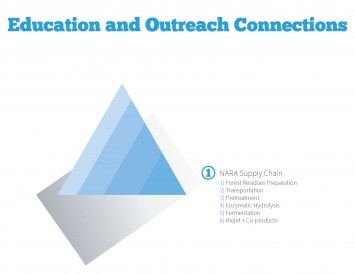
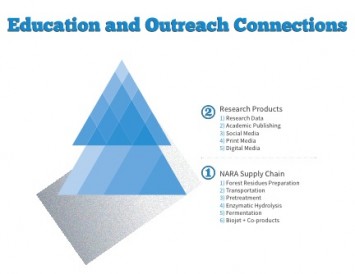
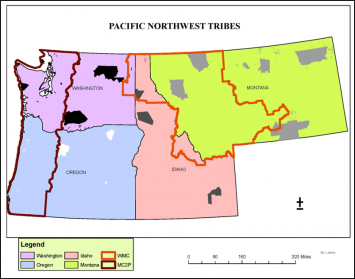
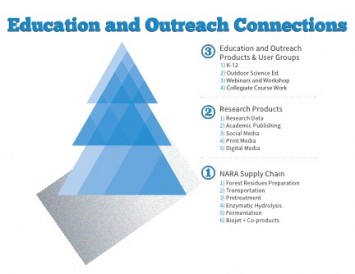



 R. Justin Hougham is assistant professor at the University of Wisconsin- Extension and Director of Upham Woods Outdoor Learning Center where he supports the delivery of a wide range of science education topics to K-12 students, graduate students, and in-service teachers. Justin’s scholarship is in the areas of place-based pedagogies, STEM education, and education for sustainability.
Justin.hougham@ces.uwex.edu
R. Justin Hougham is assistant professor at the University of Wisconsin- Extension and Director of Upham Woods Outdoor Learning Center where he supports the delivery of a wide range of science education topics to K-12 students, graduate students, and in-service teachers. Justin’s scholarship is in the areas of place-based pedagogies, STEM education, and education for sustainability.
Justin.hougham@ces.uwex.edu  Steven J. Hollenhorst is professor and dean of the Huxley College of the Environment at Western Washington University. His scholarship work is in the areas of land use policy and management; land trusts and conservation easements; and environmental leadership.
Steven J. Hollenhorst is professor and dean of the Huxley College of the Environment at Western Washington University. His scholarship work is in the areas of land use policy and management; land trusts and conservation easements; and environmental leadership.  Jennifer A. Schon is a Bluum fellow working on starting a charter school in rural Idaho. She has a Ph.D. in Education from the University of Idaho, a M.A. in Education from Ashford University, and a B.S. in Environmental Science from Western Washington University.
Jennifer A. Schon is a Bluum fellow working on starting a charter school in rural Idaho. She has a Ph.D. in Education from the University of Idaho, a M.A. in Education from Ashford University, and a B.S. in Environmental Science from Western Washington University.  Karla Bradley Eitel is a Research Associate Professor in the Natural Resources and Society Department of the University of Idaho and the Director of Education for the University of Idaho’s McCall Outdoor Science School. She holds a PhD in Natural Resources, an M.S. in Conservation Social Sciences and an M.Ed. in Curriculum and Instruction all from the University of Idaho. She earned her BA in Studio Art and American Studies from Williams College.
Karla Bradley Eitel is a Research Associate Professor in the Natural Resources and Society Department of the University of Idaho and the Director of Education for the University of Idaho’s McCall Outdoor Science School. She holds a PhD in Natural Resources, an M.S. in Conservation Social Sciences and an M.Ed. in Curriculum and Instruction all from the University of Idaho. She earned her BA in Studio Art and American Studies from Williams College.  Danica Hendrickson is the Program Director of Instruction for the Aerospace Joint Apprenticeship Committee. Danica earned a M.Ed. from the Harvard Graduate School of Education’s Mind, Brain, and Education program, co-authored Facing the Future’s Fueling Our Future curriculum, and has 12 years of middle school teaching experience.
Danica Hendrickson is the Program Director of Instruction for the Aerospace Joint Apprenticeship Committee. Danica earned a M.Ed. from the Harvard Graduate School of Education’s Mind, Brain, and Education program, co-authored Facing the Future’s Fueling Our Future curriculum, and has 12 years of middle school teaching experience.  Liv Haselbach is an associate professor in the School of Civil and Environmental Engineering at Washington State University. She is also the author of The Engineering Guide to LEED-New Construction: Sustainable Construction for Engineers. haselbach@wsu.edu
Liv Haselbach is an associate professor in the School of Civil and Environmental Engineering at Washington State University. She is also the author of The Engineering Guide to LEED-New Construction: Sustainable Construction for Engineers. haselbach@wsu.edu  Quinn Langfitt is a PhD student in the School of Civil and Environmental Engineering at Washington State University. His research is mostly focused on sustainability, including work on life cycle assessment and energy literacy assessment. quinn.langfitt@email.wsu.edu
Quinn Langfitt is a PhD student in the School of Civil and Environmental Engineering at Washington State University. His research is mostly focused on sustainability, including work on life cycle assessment and energy literacy assessment. quinn.langfitt@email.wsu.edu 
